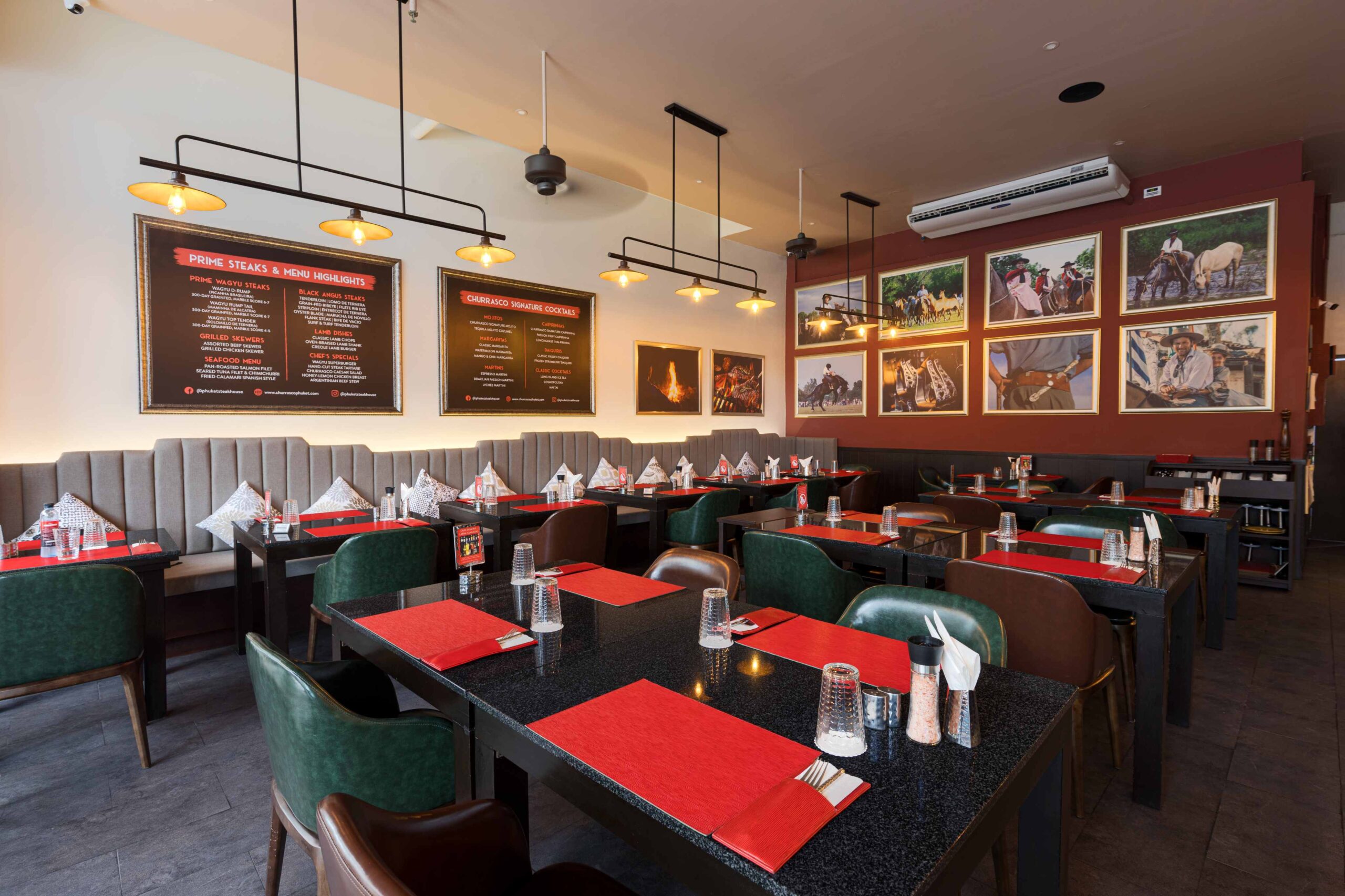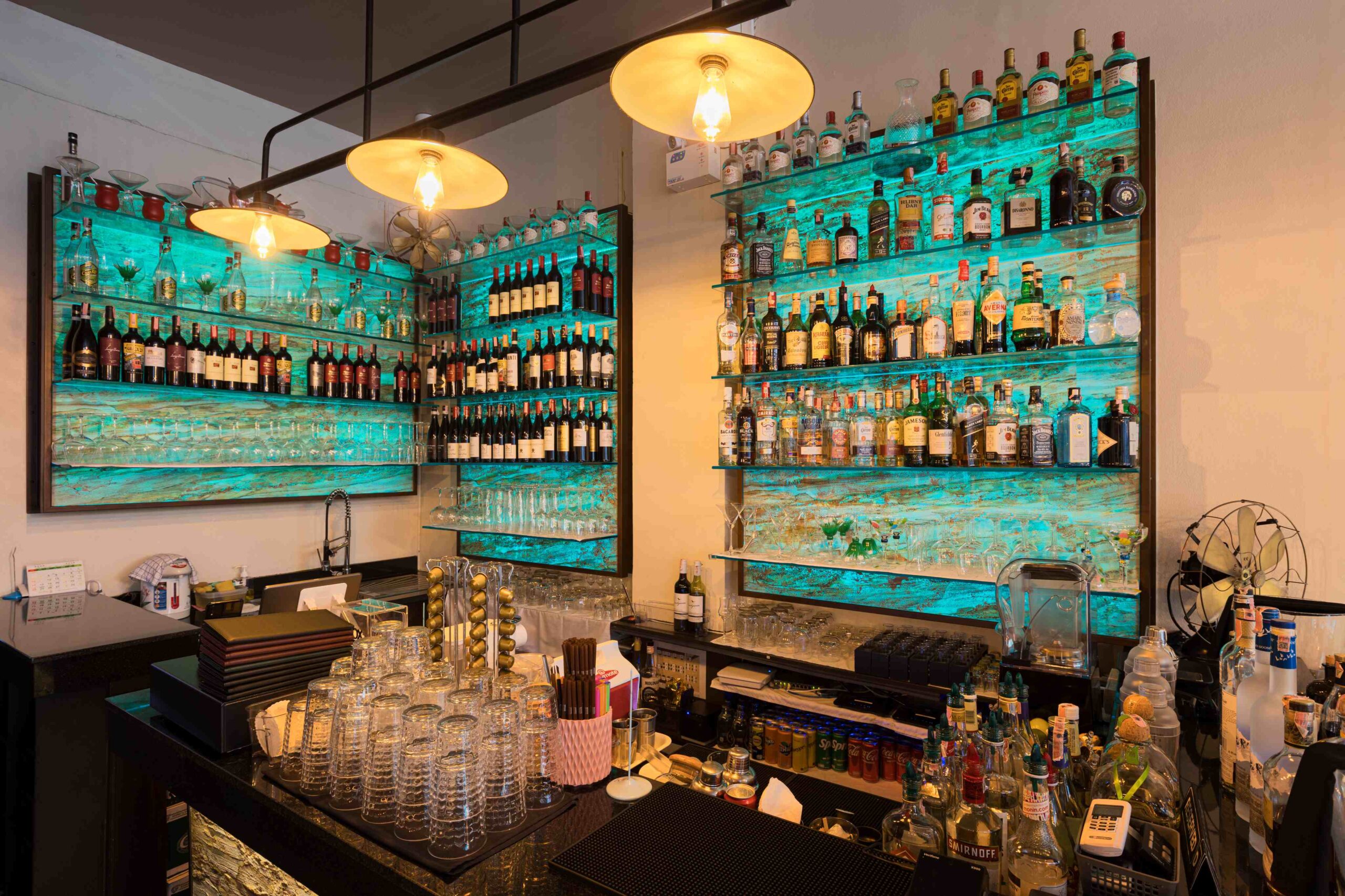
Mr. Lazzarin, with your lifelong experience of managing food & beverage operations globally, what do you consider to be the three most important reasons for personalised restaurant service? And why it still matters today?
No matter if you are an airline, hotel, or restaurant, the common success criteria is always to meet the very basic guest expectations – meaning quality, value for money, and friendly service. What many restaurants tend to forget these days is that customers simply want their dining experience to be smooth and effortless. Starting with a friendly and welcoming atmosphere, and continuing throughout the entire stay. Why does that matter? Satisfied and happy guests are our personal goodwill ambassadors, it is as simple as that. Word of mouth still makes the difference when acquiring new patrons and maintaining repeaters, who come back to enjoy your friendly services, your great food, and the pleasant environment.
How do these criteria differ across cultures and regions, based on your time spent in places like China, Jamaica, Bali, Taiwan and the Philippines – and now Thailand?
The overriding principle everywhere is that hospitality standards of service need to be continuously developed and evolved. How can we expect employees to deliver correct service, if it has not being a part of their upbringing, culture, or education? Thus, it is the responsibility of the establishment to organise and conduct in-house training, create and maintain service standards, and to provide interesting on-the-job experiences. What more, we need to look at this responsibility as a never ending process.

Speaking of your own restaurant – since opening in January 2012, Churrasco Phuket Steakhouse has built its international popularity on being “a casual restaurant, but with five-star hotel-style service”. Isn’t that a contradiction?
We firmly believe that five-star hotel style service always makes guests feel special. In our case at Churrasco Phuket Steakhouse, possibly even more, because they get this experience in a casual restaurant setting. Our welcome greeting, our guest seating procedure, the unexpected small courtesies, menu suggestions, and food presentation and quality – culminating in a warm and smiling good bye at the end of the meal. The unexpected is what makes the difference, rather than just showing guests to that table in the corner, and then hand them one menu for two persons.

Churrasco Phuket Steakhouse also stands out in marketing terms for serving “Affordable Wagyu & Black Angus Steaks”. How do you maintain this balance between quality and affordability?
Instead of applying correct management skills and procedures, many restaurateurs resort to increasing menu prices, or to cutting costs – from personnel to quality ingredients. We instead apply detailed and constant menu engineering. We all know that some F&B items are more costly than others, so restaurants need to make sure to offer a range of prices for all levels of guests. There a couple of well known secrets to create this variety. The first is to balance the menu to have low and high food cost items work in harmony. This will help you maintain your desired food cost level.
Next in line is the featuring and promoting of special items, such as bestsellers, high-demand dishes, grandma’s recipe – just to name a few. The other well kept secret is to prepare several distinct dishes from the same meat cuts or ingredients. Instead of buying meat for a Bolognese sauce, and a different kind for a Chili con Carne, why not utilise a cut that can be used for both? Plus maybe three or four more dishes, by simply changing the cooking style and ingredients?
Based on the above, how difficult was it to establish and consistently execute the acclaimed high service standards at your Churrasco Phuket Steakhouse? And what are the main difficulties of not only maintaining such standards, but to possibly elevate them further?
The best explanation I can give is the that of a football team. When the coach changes the playing style too many times, the team will be confused and start freestyling or leave. When translated into our business, the staff too has the choice to accept or to leave. Too many adjustments or gimmicks by different managers will lead to uncertainties, confusion and staff turnover.
Our approach is different. We believe in leadership by example, and staff will follow. This ranges from leaders picking up a paper from the floor, clearing a table, opening a bottle of wine, or drying cutlery when needed. Staff loyalty is not only the result of a good salary and service charge, but also by being appreciated, understood and mentored. There has to be balance, of course, meaning always training your team without going overboard. Finally, there is the old-school saying of “repeat-recap-repeat”, which brings with it staff confidence across all cultures and language barriers.

Restaurant owners are introducing more technology to reduce labour costs. What would you say to those who consider replacing human interaction with digital alternatives, and why? Can you elaborate please?
During the old days, going out for dinner meant a special occasion. From getting ready at the house, the driving and parking, entering the restaurant, and being greeted by the owner. The smell from the kitchen, the Maitre D hand-writing orders and placing them under the table number. The food being served from a Gueridon – with a customary second serving. An unforgettable experience, talked about on the way home, and probably for days to follow.
Nowadays, restaurants tend to be more affordable, but “dining done right” will always be an experience. The main difference is that there is less tolerance for waiting time, and guests dedicate more time to chatting on their mobiles, rather than talking to friends at the table. As the waiting time has shrunk, restaurants had to adjust by switching to digital alternatives, thus making the whole ordering process faster. Fortunately, the cooking time needs to be more or less the same, at least in those restaurants which still deserve that name.

Does the “iPad generation” still value the personal touch? If not, how can they be attracted and kept engaged? And what are the solutions saving us from the growing fast-food vibe and atmosphere – even in the better restaurants?
We observe daily that the iPad generation is more into the restaurant décor and colours, how busy the restaurant is, the nice plate, and finally the look and presentation of the food. Then of course comes the picture-taking marathon for their social media profiles. A series of “Likes” received can become the most important emotion for these guests, not the food. Restaurants need to pay attention to this, of course, but without replacing looks over substance. In the end, people come to you to eat well and leave happy.

What mindset would staff have to adopt to maintain consistently high service standards in a world increasingly moved by screen-based activities? And other than financial incentives, how do you keep your team motivated?
My decades in hotel management have given me an eye for spotting future hoteliers and restaurateurs. Their dedication, curiosity, long hours, hard work – those are the main characteristics. And what makes me happy is knowing that several of my ex colleagues now run their own business, and successfully too. Motivation goes hand in hand with happiness and self-esteem. It will eventually create and maintain the drive, desire, and consistency to make a difference in whatever you do. Especially so in the hospitality business.
You’ve chosen to offer an à la carte dining experience at Churrasco Phuket Steakhouse, rather than an “all-you-can-eat” Brazilian BBQ route. What led you to this decision, and how has it influenced the restaurant’s continued success?
The important difference is already in the name. A la carte dining is personalised. The ‘all-you-can-eat’ is a buffet production where you may have to wait for the tray to be refilled, and feeling less than confident about the mystery meat stew that has been sizzling in that chafing dish for the past two hours. From the start, our approach has been to attract guests who opt for quality instead of quantity. The buffet perception is often about food without flavours, or a way for the restaurant to exhaust the fridge stock. In my opinion, while the a la carte preparation is more challenging, it is much more appreciated and memorable.

Your Churrasco Phuket Steakhouse specializes in authentic Brazilian and Argentinian-style Wagyu cuts. Could you tell us more about the process of selecting, importing, and preparing these premium cuts of beef for your guests?
The selection of meat cuts has been a long and detailed process for us since day one. First, the meat is selected based on the farm’s popularity and history, then analysed by texture, colour, smell, and grade. Second, we conduct a butcher test, which tells us the yield, and the net cost per saleable weight. Third, the cooking tests. Brushed with their own melted fat, and without adding salt or pepper, two random sample steaks are grilled – one to medium, and another to medium rare. Based on their respective juiciness, tenderness and flavour, we will then select the supplier or brand, and the marbling grade of the meat. This process never stops; the testing is continuing as we speak.
You and your co-founder have successfully navigated challenges like the pandemic, and a lengthy venue renovation period. What do you believe has been the key to Churrasco Phuket Steakhouse’s resilience and continued success after its restart in November 2023?
The passion. We love what we do. Without passion there is no spark, without spark there is no light. Mutual respect between partners is essential too, the appreciation for each others job or area of responsibility. Open communication is for me the pathway for a long-lasting and successful business partnership. For us here, it is one more important reason to wake up in the morning and enjoy what we do.

What final advice would you give to young restaurateurs who want to take the plunge and open their own place? Other than the old “Location, Location, Location” slogan, please give us some criteria they should focus on to become successful?
If your business plan starts with the words “wouldn’t it be nice to have a such-and-such restaurant”, you are already on the road to failure. It indicates that you want to do something that YOU like. The problem with it is that – other than maybe your mother – nobody really cares what you like. The task you need to master is to create something that between 50 and 100 people per day like. And like it so much that they tell everyone else about it, and come back often. Only then do you have a restaurant business, instead of a cooking hobby.
And yes, while it is true that location is important, it is only one of the five key criteria below. Make sure you get at least four of these right, or you will probably fail. They are:
- Food – quality, taste, preparation, presentation, relatable
- Service – friendly, prompt, caring, efficient
- Price – appropriate, value-for-money, convenient payment options
- Location – accessible, easy parking, visible, long term lease
- Consistency – whatever level you aim at, make sure you maintain it
Nobody likes surprises, especially negative ones. Guests will probably forgive one misstep, but not two. If you miss their expectations more than once, they will not come back.
